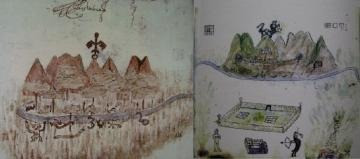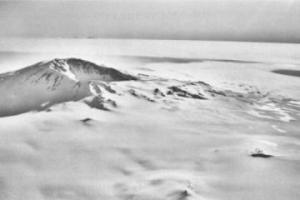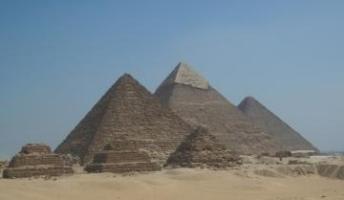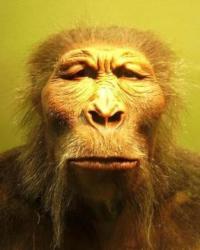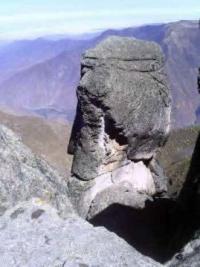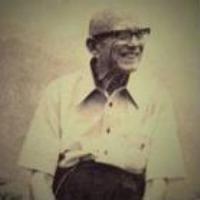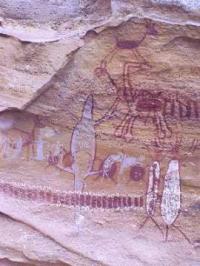Copy Link
Add to Bookmark
Report
Short Talk Bulletin Vol 11 No 06

SHORT TALK BULLETIN - Vol.XI June, 1933 No.6
THE LETTER G
by: Unknown
The Short Talk Bulletin of July, 1927, bears the title G. This
popular exposition of the meaning and symbolism of the letter so
precious to Freemasons is long out of print, although preserved in
many sets of bound volumes and in libraries. This present paper is
intended to be supplementary to, and not a recapitulation of, that
printed as Number 7, of Volume V of these Bulletins.
It is merely an accident of the English language that God and
Geometry begin with the same letter; no matter what the language or
he ritual, the initial of the Ineffable Name and that of the first
and noblest of sciences are Masonicaly the same.
But that is a secret! cries some newly made brother who has examined
his printed monitor and finds that the ritual concerning the further
significance of the letter G is represented only by stars. Aye,
the ritual is secret, but the fact, is the most gloriously public
that Freemasonry may herald to the world. One can no more keep
secret the idea that God is the very warp and woof of Freemasonry
than that he is the essence of all life. Take God out of
Freemasonry, and there is, literally, nothing left; it is a pricked
balloon, an empty vessel, a bubble which has burst. (Introduction
to Freemasonry.)
That the Letter G is not a secret symbol is attested by hundreds of
Masonic writers, each of whom has written of it from a different
standpoint. Mackey has much to say of it - too much to quote at
length, but space may be found for an extract:
G. The seventh letter of the English, Latin and Romanic alphabets.
In the Greek and many other alphabets it is in third place; in the
Russian, Wallachian, and some others, it is in fourth; in the Arabic
the fifth, and in the Ethiopian the twentieth. In Hebrew it is
called Gheemel, is of the numerical value of three, and its
significance is camel. It is associated with the third sacred name
of God, in Hebrew, Ghadol, or in Latin, Magnus, the Mighty. In
Freemasonry it is given as the initial of the word God.
Hutchinson, in his Spirit of Masonry (1776), says of the sacred
letter:
It is now incumbent on me to demonstrate to you the great
significance of the letter G, wherewith Lodges and the medals of
Masons are ornamented. To apply its significance to the name of God
only is depriving it of part of its Masonic import; although I have
already shown that the symbols used in the Lodges are expressive of
the Divinitys being the great object of Masonry, as Architect of the
World. This significant letter denotes Geometry, which, to
artificers, is the science by which all their labours are calculated
and formed; and to Masons, contains the determination, definition and
proof of the order, beauty and wonderful wisdom of the power of God
in His Creation.
Dr. Frederick Dalcho wrote (1801) as follows:
The Letter G, which ornaments the Masons Lodge, is not only
expressive of the name of the Grand Architect of the Universe, but
also denotes the science of Geometry, so necessary to artists. But
the adoption of it by Masons implies no more than their respect for
those inventions which demonstrate to the world the power, the wisdom
and the beneficence of the Almighty Builder in the works of
creation.
Various attempts have been made to place the date when the Letter G
first came into the ritual of Speculative Freemasonry. Pichards
expose, originally published in 1730, does not contain any reference
to it. Later editions do include a curious doggerel which is worth
repeating here. It is in the usual Question and Answer, or Examiner
and Response, form so popular in all ritualistic work in the early
days.:
Resp. In the midst of Solomons Temple there stands a G, A letter
for all to read and see; but few there be that understand what means
the Letter G.
Exam. My Friend, if you pretend to be of this Fraternity, you can
forthwith and rightly tell, what means that Letter G.
Resp. By sciences are brought to light, bodies of various kinds.
Which do appear to perfect sight; but none but males shall know my
mind.
Exam. The Right shall.
Resp. If Worshipful.
Exam. Both Right and Worshipful I am, to hail you I have command,
that you forthwith let me know, as I you may understand.
Resp. By letters four and science five, this G aright doth stand,
in due Art and Proportion; you have your answer friend.
While authorities differ as to just when the letter G came into the
ritual, all are agreed that the date is not later than 1768; very
probably it was earlier.
Authorities are, however, by no means at one on the origin of the
symbol then adopted into Speculative Masonry. The choice is wide and
the fancy free; if we are willing to admit presumptive testimony,
even if it will not satisfy a legal mind as evidence, then the
introduction of the symbol into our system is as old as Speculative
Masonry - however old that may be!
The Letter G as we know it, the Roman G, is not a geometrical
figure. It is part circle, part oval, part horizontal and vertical
lines. It bears internal evidence of being a conventionalizing of a
much more severe design.
In the Greek, Gamma, or G, the third letter, is a square standing
on end with the horizontal arm extending to the right, like a plain
block letter T, with the left extension of the cross piece omitted.
In Hebrew the G is a square with the right side omitted; two right
angles joined, the horizontal arms extending to the right.
Refer to the doggerel again;
By letter four and science five, this G aright doth stand.
Letters four properly refers to J H V H, the tetragrammaton or
four-letter word, the Hebrew designation of deity, which we call
Jehovah, for want of a more likely rendition of the vowels (omitted
in early Hebrew writing).
Science Five, of course, is Geometry.
The Pythagoreans reverenced numbers as sacred; geometry was to them
the sacred science. It initial letter, Gamma, a square, was
especially revered. The Gamma looks like a square used by builders;
it was the symbol of the actual, four-sided, or geometrical square,
the first whole number square, and therefore, the representative of
deity, the four-letter word, the tetragrammaton.
Symbols are easily converted the one into the other and back again.
If the Gamma, which appeared like a workmans square, was a symbol of
the geometrical square, which in turn was a symbol of Deity, then, by
a simple reconversion looked like Gamma, which in one position looked
like the square of the workman, soon came to symbolize the
tetragrammaton or four-letter word.
The Greek Gamma was rounded into the Latin C. For a while it stood
for both the sounds of g and k. Later (third century B.C.), a
slight change was made in the Latin c which stood for the soft, or
j sound - and behold, our modern Roman G. Hence, by a path
straight to any but mind demanding documentary proof, we place the
origin of our G, as representing both God and Geometry, as far back
as the Pyrhogoreans (sixth century, B.C.).
Another interesting hypothesis - it is hardly more - calls attention
to the fact that three geometrical forms appear in the Greek
alphabet, as we have seen; Gamma (G) is a square standing on end, the
horizontal arm extended to the right. Omicron (O) is a circle, Delta
(D) is a triangle.
Writing one letter on top of another to form a monogram is very old.
The three Greek letters, Gamma, Omicron and Delta may be combined in
a monogram to form a very fair conventionalizing of our letter G
inside a triangle which looks not unlike our modern square and
compasses!
Here is further testimony that the letter G and the ancient square,
the Greek Gamma, or the Greek monogram of Gamma, Omicron, and Delta,
which make a conventional Roman G inside a triangle, were connected
in ancient Masonic minds. This is credited in the Bulletin of the
Grand Lodge of Iowa (September, 1932) to Brother John A. Cockburn,
noted Masonic writer.
If further proof of the former identity of the letter G and the
square were needed, it is to be found in the text of a ritual no
longer in use among us. Therein it is recorded that in an attack on
our Master a second blow was struck with a square across his breast,
and that on an exhumation a faint resemblance to the letter G
marked on his left breast was discovered. (Italics ours - Ed.)
The combination of square and circle, or cross and circle (a cross
forms two right angles, or squares) appears in a hundred guises in as
many religious rites. The interested may recall the hot cross bun
and the association of the egg, marked with crosses, with Easter; in
Yorkshire, the brides cake at weddings was formerly cut into small
squares and passed through a wedding ring, as a form of prayer for
fertility; circle and square are combined in the wearing of a wedding
ring on the fourth finger; the very number 4 itself was originally
a circle, being changed to the present conventionalized square and
upright after the fifteenth century; children still play the ancient
game of noughts and crosses, or tit-tat-toe, a combination of
circles and squares.
That Freemasonry has in her letter G and its connotations a
relationship with this ancient association of letters four and
science five - that is, of Deity and science or knowledge - is not
remarkable - rather it would extraordinary if she had not. In all
ages and all religions, man has interwoven together his thought of
spirit and matter, his ideas of relative and absolute. Freemasonrys
G is but another of these conceptions, expressed in a symbol. If
the symbol now used - a Roman G - is less fitting for an art
concerned especially with squares than was the original Gamma, it at
least should receive the reverence due a respectable age. Even those
whose ideas of the fitness of things would be better satisfied if our
G were Gamma, would hardly subscribe to an effort to change now.
Mackey, the great Masonic authority, regretted that the Roman g
ever found its way into our symbolism, and read the G as a
substitute for the Hebrew Yod, which in turn is a symbol of the
tetragrammaton, or four-letter word. Unquestionably the Lost Word,
the very heart of the Masonic system, is represented by the Yod, but
it is a far cry to include also Geometry in that representation. The
Greek Gamma, (of which our roman G is a substitute) however, did
represent both the ineffable Name and the greatest of the sciences.
Three Greek letters which spell our name for Deity can be monogrammed
to make a modern Roman G inside a square and compasses. However
corrupt the geometrical form of the Roman G, and however much more
illuminating it might have been had we continued to use the Greek
Gamma of Pythagoras, what we have adopted and made so integral a part
of our Masonry that it is in every English speaking Lodge in the
world, is far to sacred and familiar ever to change.
Of course Mackey is not lightly to be set aside, yet modern
scholarship so differs with the great authority on this point that
even those who revere him most, agree that here his genius led him
astray.
Sufficient has been said to indicate that the Letter G is far more
than a mere letter. A symbol of Deity and His Own science, Geometry,
it carries us back to the childhood of knowledge; it combines and
associates other symbols from which it sprang and the ideas for which
they stand. As a symbol G is particularly Freemasonrys own. To
the inquiring mind it calls insistently, if always softly, for better
understanding and appreciation from Craftsmen.








